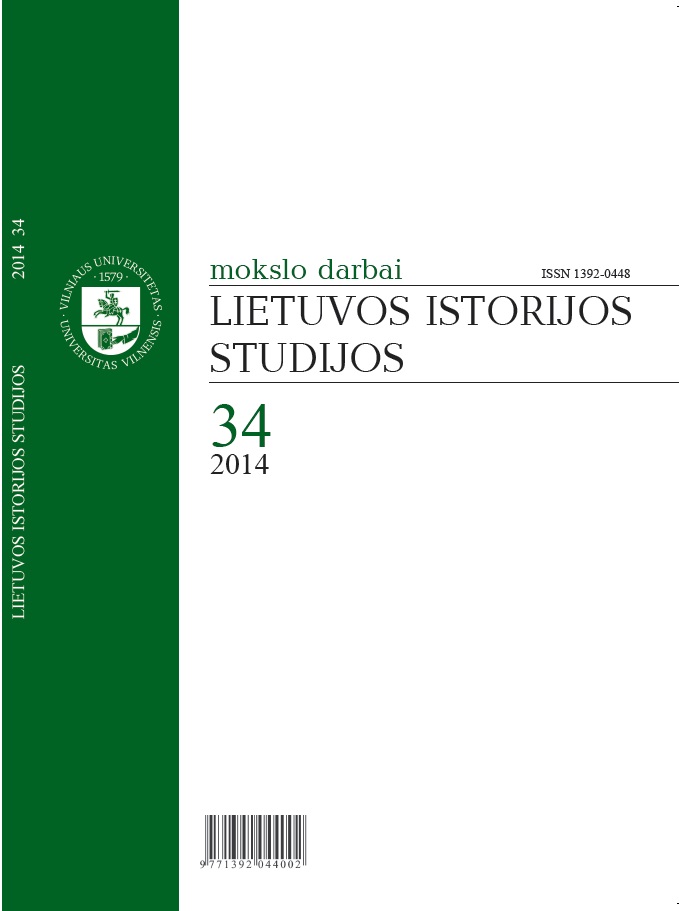KĄ SUTIKTUME PRAVĖRĘ BAJORO SODYBOS VARTUS?
What do we meet beyond the gates of country seat of noblemen?
The servants in the noblemen’s household in the Grand Duchy of Lithuania in the 16th c. and the first half of the 17th c
Author(s): Neringa DambrauskaitėSubject(s): Cultural history, Social history, 16th Century, 17th Century
Published by: Vilniaus Universiteto Leidykla
Keywords: noblemen; servants;household;
Summary/Abstract: Which servants do we meet in the country seat of noblemen in the 16th century and the first half of the 17th century? Where did they live and what functions did they do? These questions are the important problems of the research of the noblemen’s household. It includes both social and material aspects of the household’s history. The object of this research – the servants, who lived in the country seats of noblemen. The concept of “nobleman” refers to the lower stratum of the noble class. The analysis of the important sources–inventories of noblemen’s estates, judicial cases, Statutes and testaments indicate that there were some buildings in the country seat, where servants lived and worked (a house of the noblemen, a house, where врадникъ lived, челядня or a bakehouse, a cuisine, a brewery and separate buildings, where malt was produced). There lived and worked servants of different social status: noblemen (врадникъ, хлопец, служебники), servants of peasantry and mostly servants of unfree or employed family of nobleman’s estate. Their functions included administration (врадникъ, тивун, keyholder (ключник/ ключница), служебница, рыкуня), services for noblemen family: personal service (servants-maids, хлопец, служебники), washing (laundress (прачкa)), cookery (cook (кухаръ), cook’s assistant (кухтик), baker (пекарца), brewer (пивоварец)), supervision of noblemen’s property (тивун, ключник/ ключница, служебница), handling of livestock farm (рыкуня, unfree girls (девъки), herd (пастухъ), stableman (конюх, машталер), coachman (возницa)), organization of handicrafts (spinner (тонкопрядницa, przątka), weaver (ткачкa), tailor (швачкa), weaver of carpets (коверница), золотошвея, бралья, forbotnica)) and works in the fields (служебница, unfree or employed women, girls and boys (паробки)). Usually just a few servants worked in the nobleman’s household. Consequently one person carried out some of these different functions. The work of servants was dedicated to the everyday needs of noblemen’s household.
Journal: Lietuvos istorijos studijos
- Issue Year: 2014
- Issue No: 34
- Page Range: 9-22
- Page Count: 14
- Language: Lithuanian

